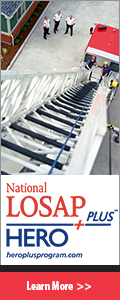Active Shooter and Complex Attack Resources for Fire and EMS
Source: DHS Office of Health Affairs
As recent events so tragically demonstrate, we continue to face ongoing threats in an uncertain world. Active shooter events, the use of improvised explosive devices (IEDs), and the threat of complex coordinated attacks must be considered as at least plausible, if not probable.
A pre-planned, integrated response by all first responder disciplines is required in order to maximize effectiveness and improve the survivability of those injured in such attacks. Many communities have already established integrated response programs, and there is no reason for any jurisdiction to “reinvent the wheel” from scratch. While there is no “one-size fits all” solution to the challenge of integrated response, there are already model communities of different sizes and compositions. From rural to urban, volunteer to paid, and everything in between – somewhere, in a system a lot like yours, someone has already done much of the ground work. And the benefits of integrated response extend well beyond those realized during the rare terror attack. Relationships between police, fire, and EMS agencies that are formed (and enhanced) during pre-planning and training will pay great dividends during all requests for service, from routine calls to natural disasters.
Below are just some of the many resources that already exist to help guide those communities who have decided to pursue a more prepared community through integrated response.
NFPA Standard
NFPA 3000 (PS), Standard for an Active Shooter/Hostile Event Response (ASHER) Program
Integrated Response
A Study of Active Shooter Incidents in the United States Between 2000 and 2013
Active Shooter Study: Quick Reference Guide
Hemorrhage Control (Early care saves lives)
Prevailing Response Models and Concepts
Advanced Law Enforcement Rapid Response Training
Committee on Tactical Emergency Casualty Care
Bystander Preparedness and Response
Grant opportunities
U.S. Department of Justice Bulletproof Vest Partnership
Other Resources
Federal Bureau of Investigation – Active Shooter Incidents
NAEMT Courses – B-Con/LEFR-TCC/TCCC/TECC
The DHS Office of Health Affairs stands ready to assist you as you endeavor to strengthen your response. If you need assistance, or want to speak with other communities who have already developed integrated response programs, please contact us at Healthaffairs@HQ.DHS.GOV.



